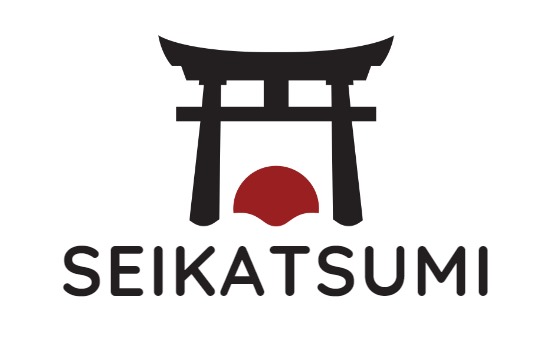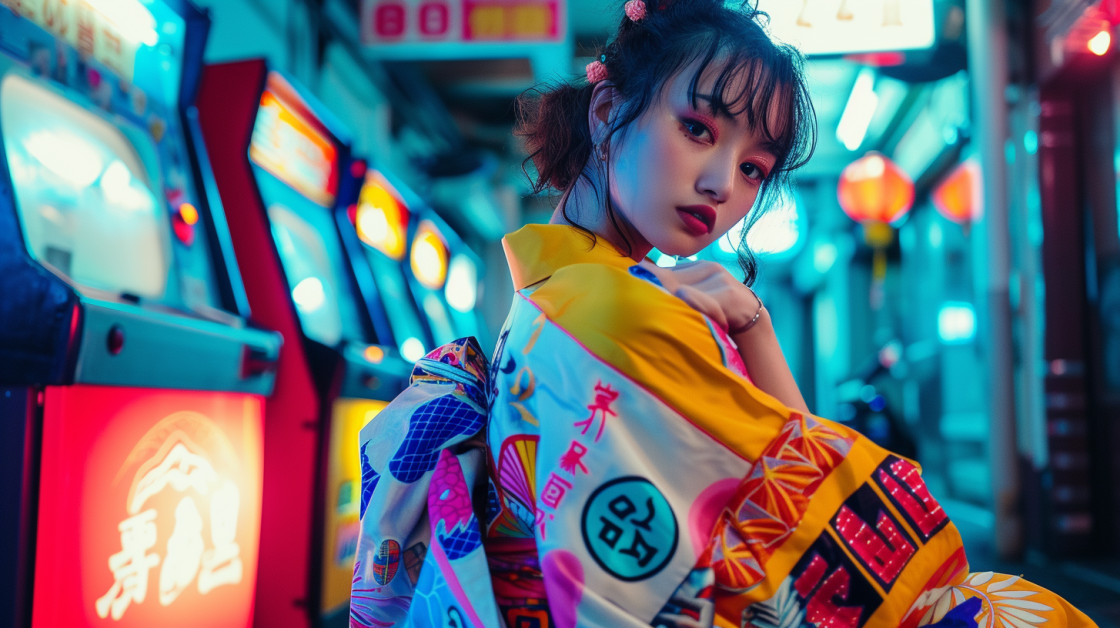Are you as enthralled by the vibrant 80s Japan aesthetic as I am? I can’t get enough of it!
The 1980s in Japan was an era of immense creativity and transformation, something that deeply resonates with me.
I’ve spent countless hours diving into this fascinating period, exploring its rich influence on art, music, and fashion.
So, why hold back? Join me in exploring the electrifying world of 80s Japan aesthetic, where tradition meets innovation, and every artistic expression is a bold statement!
Let’s dive in and relish this iconic era together! 🙂
Cultural Explosion
The 1980s in Japan was a time of cultural explosion and innovation.
It was a decade where Japan cemented its place as a global cultural powerhouse, with its music, fashion, and anime/manga taking the world by storm.
Music Revolution
The 80s saw a revolution in Japanese music, with the rise of J-pop and the emergence of bands like Yellow Magic Orchestra, who blended traditional Japanese music with electronic and pop elements.
J-pop became a cultural phenomenon in Japan, and its influence spread to other parts of Asia.
The music videos of J-pop artists were also a major part of the cultural revolution of the decade, with their bold and colorful visuals capturing the attention of audiences around the world.
Fashion Trends
The 80s in Japan was a time of fashion experimentation, with the rise of streetwear and the emergence of new styles like Harajuku and Lolita fashion.
Harajuku fashion was characterized by bright colors, bold patterns, and a mix-and-match approach to clothing, while Lolita fashion was influenced by Victorian and Rococo styles, with frilly dresses and petticoats being a staple.
These styles were often worn by young people in Tokyo, and they soon became popular around the world.
Hey you! Are you interested in more aesthetics? Then be sure to check out our top articles! You definitely can’t miss it!
Japanese Aesthetic 2024: The Beauty of Simplicity and Harmony
90s Japan Aesthetic: The Era’s Best Iconic Styles and Culture 2024
Anime and Manga Surge
The 80s was also a time when anime and manga became a global phenomenon. Japan’s animation industry was booming, and anime like Akira and Gundam became instant classics.
Manga, or Japanese comics, also gained popularity around the world, with titles like Dragon Ball and Sailor Moon capturing the imagination of readers.
The popularity of anime and manga helped to cement Japan’s place as a cultural powerhouse, and its influence can still be felt today.
Technological Boom
The 1980s saw a technological revolution in Japan that transformed the country into a global powerhouse.
The rise of electronic gadgets and video gaming had a significant impact on Japanese culture and the world at large.
As a tech enthusiast, I’m excited to share some of the key developments that occurred during this time:
Video Gaming Rise
Video gaming was a significant part of the 80s Japan aesthetic. The first home console, the Nintendo Entertainment System (NES), was released in 1983 and quickly became a cultural phenomenon.
The NES was followed by other consoles such as the Sega Master System and the NEC PC Engine.
These consoles brought gaming into the homes of millions of people and paved the way for the gaming industry we know today.
In addition to home consoles, arcades were also a popular destination for gamers. Arcades were filled with games such as Pac-Man, Space Invaders, and Donkey Kong.
These games were simple yet addictive and provided hours of entertainment for gamers of all ages.
Electronic Gadgets
The 80s saw the rise of electronic gadgets in Japan. The Walkman, a portable cassette player, was introduced in 1979 but became popular in the 80s.
The Walkman revolutionized the way people listened to music and allowed them to take their music with them wherever they went.
In addition to the Walkman, other gadgets such as the digital watch, the pocket calculator, and the electronic dictionary became popular in Japan.
These gadgets were not only useful but also stylish and became a symbol of the 80s Japan aesthetic.
Urban Landscape
As I stroll through the bustling streets of Tokyo, I can’t help but be captivated by the city’s unique urban landscape. The 1980s saw Tokyo transform into a global powerhouse, with technological innovations and an insatiable pursuit of material wealth driving the city’s rapid growth.
City Life
The streets of Tokyo are alive with energy and excitement, with neon lights illuminating the cityscape at night. People bustle about their daily lives, with the latest fashion trends and music styles on full display.
The 80s saw the rise of a new youth culture, with streetwear and casual fashion becoming increasingly popular. This was largely influenced by the hip-hop culture and American rap music that swept the nation.
One of the most iconic aspects of 80s Japan aesthetic is the city’s vibrant nightlife. Clubs, bars, and karaoke lounges dot the city, with a lively atmosphere that lasts well into the early hours of the morning.
The city’s love of technology is also evident in its many video arcades, where gamers can find the latest games and consoles.
Architecture
The architecture of Tokyo is a fascinating blend of traditional and modern styles, with towering skyscrapers and ancient temples coexisting side by side.
The city’s love of technology is evident in its many futuristic buildings, such as the iconic Tokyo Tower and the Nakagin Capsule Tower.
One of the most striking features of Tokyo’s architecture is its use of neon lights. Bright, colorful lights adorn the city’s buildings, creating a dazzling display that is truly unique.
The city’s love of innovation is also evident in its many cutting-edge designs, such as the Sony Building in Ginza, which showcases the latest in audiovisual technology.
As I continue to explore the city, I am constantly amazed by its beauty and energy, and I can’t wait to see what the future holds for this vibrant metropolis.
Art and Design
As someone who is fascinated by Japanese culture, the 80s Japan aesthetic is a personal favorite of mine.
The art and design of this era were heavily influenced by pop culture, resulting in a unique and vibrant style that is still popular today.
Graphic Design
One of the most recognizable aspects of 80s Japan aesthetic is the graphic design. Bright colors, bold lines, and geometric shapes were often used in posters, album covers, and advertisements.
The use of kanji and kana characters in design added an extra layer of visual interest. Some of the most iconic examples of 80s japan aesthetic graphic design include the work of Tadanori Yokoo and Ikko Tanaka.
Pop Culture Influence
80s Japan aesthetic was heavily influenced by pop culture, both domestic and international. Manga and anime were at the height of their popularity, and their impact on Japanese art and design was undeniable.
The success of video games and arcade culture also played a significant role in shaping the aesthetic of the era.
This influence can be seen in the bright colors, bold lines, and futuristic themes that were prevalent in 80s Japanese art and design.
Social Dynamics
As I delve into the world of 80s Japan aesthetic, I can’t help but be excited by the unique social dynamics that shaped this era.
From youth movements to subcultural styles, there was a lot going on in Japan during this time.
Youth Movements
The 80s in Japan saw the rise of youth movements that challenged the status quo.
These movements were often led by young people who were disillusioned with the traditional values of Japanese society and sought to create something new and exciting.
One such movement was the “otaku” culture, which was characterized by a fascination with anime, manga, and video games.
Otaku were often seen as outcasts, but they found a sense of belonging in their shared love of these subcultural forms of entertainment.
Another youth movement was the “gyaru” culture, which was popularized by young Japanese girls. This subculture was characterized by a flashy look and an embrace of Western pop culture.
Gyaru were often seen as rebellious and were criticized for their fashion choices, but they found a sense of empowerment in their ability to challenge societal norms.
Subcultural Styles
The 80s in Japan was also a time of experimentation with subcultural styles. These styles were often inspired by Western fashion and music, but they were given a unique Japanese twist.
One such style was the “visual kei” movement, which was characterized by flamboyant fashion and makeup.
Visual kei musicians often had elaborate hairstyles and wore heavy makeup, and their music was a fusion of rock, pop, and classical music.
Another subcultural style was the “Lolita” fashion movement, which was inspired by Victorian-era clothing. Lolita fashion was characterized by frilly dresses, petticoats, and elaborate accessories.
This style was often seen as a rebellion against the hyper-sexualized fashion of the time, and it was embraced by young women who wanted to express their femininity in a more innocent way.
My own personal nostalgia moments!
Even though I was born in the 90s, I have a deep appreciation for the cultural artifacts of the 80s that continued to influence my childhood.
One of the most iconic items I experienced from that era was the first Walkman. It represented a revolution in personal music consumption, and even as a child of the 90s, I was fascinated by its simplicity and the way it changed how people listened to music.
Additionally, the gaming consoles of the 80s, like the NES, played a significant role in my early gaming experiences. These consoles weren’t just about playing games; they were about experiencing a pivotal moment in the evolution of digital entertainment.
The charm and simplicity of 80s technology, combined with its groundbreaking impact, have left a lasting impression on me, bridging the gap between the decades and enriching my appreciation for technological and cultural advancements.
Frequently asked Questions
What defines the 80s Japan aesthetic in fashion?
Bold colors, eclectic patterns, and a mix of traditional and futuristic styles.
Was technology influential in 80s Japan aesthetic?
Yes, technology heavily influenced the futuristic and innovative aspects.
Are any iconic pop culture elements associated with this aesthetic?
Anime, video games, and J-pop from the era are iconic to this aesthetic.
If you liked this blog article about 80s japan aesthetic, don’t forget to follow us on Pinterest so you don’t miss any more tips.
Let us know, which of the above ist your favorite nostalgia moment!


